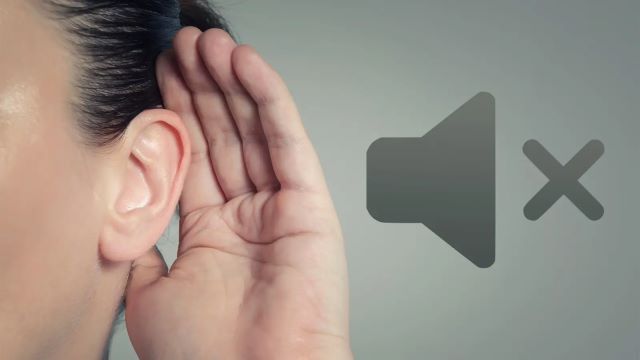Hearing Loss from Headphones: Is Your Music Too Loud?

In today’s fast-paced world, earphones and headphones have become ubiquitous companions, providing us with a soundtrack to our lives. Whether we’re commuting, working out, or simply unwinding, these devices offer instant access to music, podcasts, and audiobooks. But while earphones and headphones offer undeniable convenience, their prolonged use can pose significant risks to our hearing health.
The Alarming Stats
- The World Health Organization (WHO) estimates that over 1.1 billion teenagers and young adults (aged 12-35) are at risk of hearing loss due to unsafe listening practices.
- A study published in the journal “Noise and Health” found that people who regularly listen to loud music through earphones or headphones are three times more likely to develop noise-induced hearing loss (NIHL) compared to those who don’t.
- NIHL is a permanent form of hearing loss that can lead to difficulty understanding speech, tinnitus (ringing in the ears), and even social isolation.
The Deceptive Culprits
While the decibel level is undoubtedly a crucial factor, several other aspects contribute to the hearing hazards associated with earphones and headphones:
- Fit: Earphones that don’t fit snugly in the ear canal can leak sound, causing you to crank up the volume to compensate. This can expose your ears to dangerously high noise levels.
- Noise cancellation: While it seems counterintuitive, noise-canceling headphones can create a false sense of security, leading you to listen to music at higher volumes than you realize.
- Listening environments: Using earphones or headphones in noisy environments like airplanes, buses, or gyms can tempt you to increase the volume to drown out background noise.
Turning Up the Volume on Safety
The good news is that you can still enjoy your favorite tunes without putting your hearing at risk. Here are some essential safety tips:
- Follow the 60/60 rule: Limit your listening time to 60 minutes at no more than 60% of the maximum volume.
- Choose well-fitting earphones: Opt for earphones that provide a good seal in your ear canal to minimize sound leakage.
- Be mindful of your environment: Avoid using earphones or headphones in noisy places where you’re likely to increase the volume.
- Take listening breaks: Give your ears regular breaks to recover from sound exposure.
- Seek professional advice: If you experience any hearing concerns, consult an audiologist for a hearing test and personalized guidance.
Remember, your hearing is a precious gift. By adopting safe listening practices, you can protect it for years to come and continue to enjoy the world of sound without risking its silence.
Additional Tips:
- Look for earphones or headphones with built-in volume limiters.
- Consider using apps that monitor your listening volume and duration.
- Be aware of the signs of hearing loss, such as difficulty understanding speech, needing to ask people to repeat themselves, and tinnitus.
- If you’re unsure about safe listening practices, err on the side of caution and keep the volume down.
Taking regular listening breaks is crucial for protecting your ears from the harmful effects of prolonged earphone or headphone use. Here’s a breakdown of why breaks are important and how to schedule them effectively:
Why are listening breaks essential?
Our ears have tiny hair cells within the cochlea that convert sound waves into electrical signals our brain interprets as sound. Loud noises and continuous sound exposure can damage these hair cells, leading to Noise-Induced Hearing Loss (NIHL). NIHL is permanent and can cause symptoms like:
- Difficulty understanding speech, especially in noisy environments
- Muffled hearing
- Tinnitus (ringing in the ears)
- Hypersensitivity to certain sounds
How often should you take breaks?
As your article mentioned, the 60/60 rule is a good starting point: listen for no more than 60 minutes at no more than 60% of the maximum volume. But even within that hour, incorporating breaks is crucial. Experts recommend:
- Short breaks every 15-20 minutes: Step away from your device and allow your ears a moment of quiet. Focus on your surroundings and let your auditory system rest.
- Longer break after 60 minutes: This is when a more extended break (30-60 minutes) is crucial to allow your hair cells to recover fully. Engage in activities that don’t involve any sound exposure, like taking a walk in nature or having a conversation.
Here are some additional tips for effective listening breaks:
- Stretch and move around: Get your blood flowing and take your mind off the music.
- Do some gentle exercises: Light stretches or yoga poses can help relax your body and mind.
- Engage in conversation: Talk to someone face-to-face or have a phone call without using headphones.
- Listen to the natural world: Pay attention to the sounds around you, like birds chirping or leaves rustling. This can be a calming and restorative experience.
Remember, your ears are delicate and irreplaceable. By incorporating regular listening breaks into your routine, you can protect your hearing and continue to enjoy the sounds you love for years to come.
Visualizing the Breaks:
Imagine yourself lost in your favorite tunes, completely immersed in the music. Every 15-20 minutes, take a mini-break:
Stretch your arms, take a few deep breaths, and let the sounds of the outside world wash over you.
After 60 minutes, step away for a longer break:
Go for a walk, have a conversation, or simply sit in silence and appreciate the world around you.
By making these small changes, you’re giving your ears the gift of quiet, and they’ll thank you for it!








